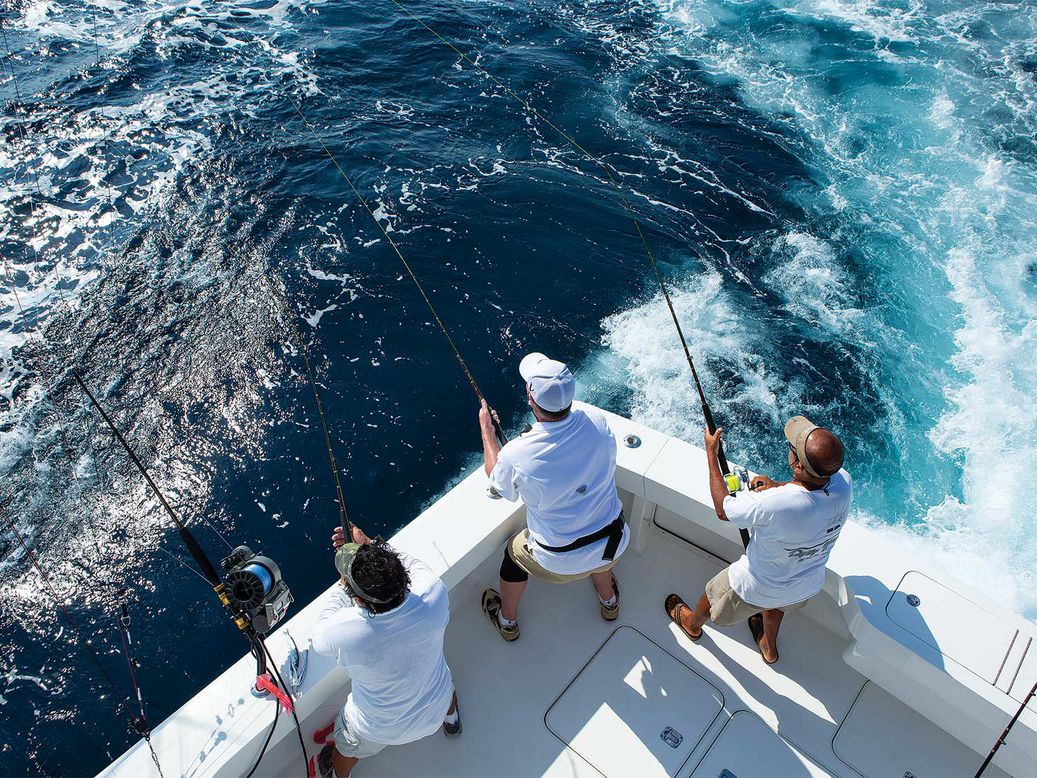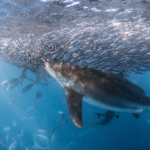Article Courtesy: marlinmag.com | Originally Published: 9/22/2021 | Click here for original article
How to Create and Manage Multiple Billfish Hookups
If you should find yourself lucky enough to be in a position to catch a pile of billfish in one day, then you might need to reexamine your technique when it comes to turning one bite into two, three, or even four or more. While not all billfish species give you such an opportunity to catch high in the double digits, sailfish and striped marlin often will.
To learn more about how boats are getting covered up by multiple billfish, I called on two captains who have a great amount of experience in Mexico’s Magdalena Bay, a location known for being one of the best places on the planet for encountering multiples. Shoe’s Devin Silas and Big Oh’s Newt Cagle have racked up unbelievable numbers over the years, and Mag Bay has given them both the opportunity to not only perfect the hookup method, but to also effectively grasp how to handle multiple hooked fish.
Both Cagle and Silas agree that the first fish is often the best teaser you have out there, and no amount of hook baits, dredges or teasers can make a pod turn on like a hooked schoolmate. Knowing what opportunities lie before you also helps by watching the marks on your sonar or sounder, and these guys will continue to fish even after the first one is hooked, as long as they’re marking others.
To start the day, both captains will pull a similar pattern while searching for the main body of fish: two teasers, two dredges, two flat lines and two long baits. Covering ground with a full spread helps narrow the field, and once they’ve located a group that’s biting, they will often change up their spread and tactics.
“If you want to catch a hundred, you need to pull teasers and just two flat lines,” Silas says. While he has had as many as 10 fish on at once, he doesn’t like to get too stretched out. Cagle agrees, chiming in with this “less is more” approach: “If you spend too much time fighting too many fish at once, it will take you away from the main body. I would rather pick away a couple at a time than lose the school altogether.”
When you scrap the long riggers, you dismiss that possibility; common sense says if you’re going for multiples, a stretched-out fish makes the likelihood of landing it even more difficult because you usually jockey to get the leader on the closest fish.
When fishing just your flat lines, you’re able to get the best—and often the more committed—bites off the teasers or dredges on the first take instead of hoping the faded-off or stung fish happens to halfheartedly eat your long bait.
Both Shoe and Big Oh fish similar tackle, using 30-pound-test Berkley Trilene mono in Blaze Orange spooled onto Shimano Talica 25s. After catching more than 5,000 billfish on the new Shoe, Silas finds that the line is tough enough to withstand a few encounters with the boat’s chines and is easy to see. Confidence in the tackle—as well as the boat—will keep your head in the game instead of worrying about whether the main line has too much bottom paint on it. But even the toughest fishing line has its limitations, so the crew always pulls off the compromised top shot, or replaces it entirely after a few days of hard fishing.
These two professional teams also fish with a rotation of 16 rods that are each rigged and ready to go, switching them out and checking the drags after each fight. Being a rod down in the midst of a sick bite screams unprepared, so plan ahead.
Silas and Cagle both get just as many hungry fish behind the boat as the other, but each has a slightly different approach after the first hookup. After Silas gets his first bite and the boat has started an inside turn, the same-side dredge will be sucked in tight and the squid chain will follow, stopping right behind the dredge in the clean water. Silas shortens his chain and dredge lengths when he builds them so they can hang higher in the rigger, which makes it easier to fight the fish on that side without getting tangled. His dredge squids are rigged with 400-pound mono to keep them from tangling when they must be quickly deployed; Silas fishes a mud-flap dredge on the opposite side.
Cagle takes a slightly different approach on his first bite. He likes to fish the dredge (preferring Fish Downsea shads and Fire Tailz strips) on the inside turn while the outside chain remains in the water, giving him a little more room to fish on the inside of the turn, saying the inside dredge is the one that will help hold the following fish with you. He then instructs his anglers to put their baits in the “sweet spot” where the short riggers would be—behind the inside dredge—and to look for other fish. He also feels that it’s important to evaluate the sea conditions when making circles around the hooked fish, stopping at half-circles if it’s rough, to keep the boat up-sea of the fish and keep as much water out of the cockpit as possible when you start backing up for a release.
Whenever fighting multiple hookups, both captains pick out the easiest fish to catch. Once that fish has been identified, the angler will lock up the drag (sometimes calibrated up to 20 pounds at full) and get on his fish as quickly as possible, while all the other anglers back off their drags to keep the drag from increasing as the line goes out and the spool gets smaller.
Constantly communicating with one another about the fish you are focused on is first and foremost, and if during the fight you find that fish is no longer “easy”—because he’s either sounded, ripped off a bunch of line or drastically changed direction—you should change your focus to another. Sometimes just pulling away from a fish that has sounded—even if you’re only a few rigger’s lengths away from it—and loosening the drag will cause him to pop up to the surface again. Only then will he be an attainable, swift release. After all, the goal here is to catch them fast and to stay with the main body of fish. Now go get the other 99.







